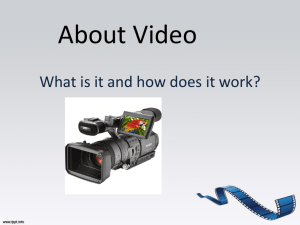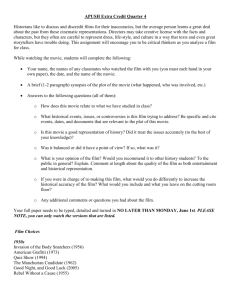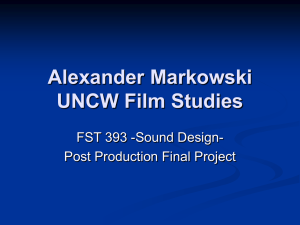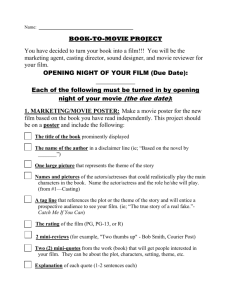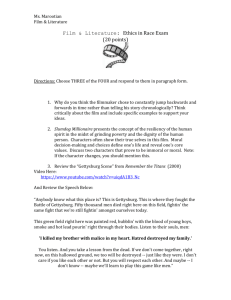Budgeting for any film
advertisement
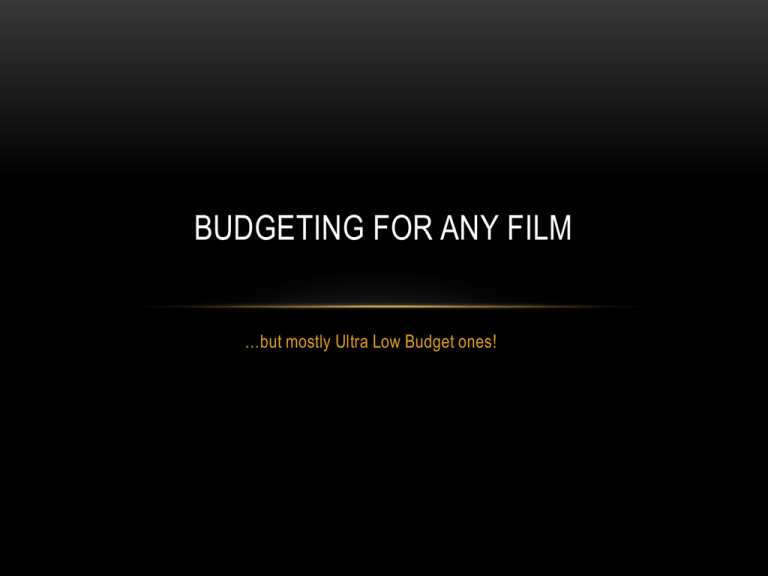
BUDGETING FOR ANY FILM …but mostly Ultra Low Budget ones! PRESENTER – MICHAEL REINERO • Who Am I? • An accountant who became an actor • An actor who became a film financer • A film financer who became a producer • A producer who became a writer/director • A writer/director who became a film maker ALL BUDGETS NEED A STORY FIRST • THE RIGHT PEOPLE AND THE RIGHT STORY! THREE PHASES OF A PRODUCTION • PRE-PRODUCTION – Can take years. If done correctly, can keep your budget low and under control. • PRODUCTION – Usually takes 6 to 8 weeks. How the production is run will make or break your budget. • POST PRODUCTION – Can take years. Where all the mistakes in production are fixed. PRE – PRODUCTION COSTS • Develop or obtain a Story and Screenplay • Prepare a budget based on the contents of the Story • Determine your Cash vs Trade opportunities • Obtain financing for the cash your budget requires • With a budget and financing, you can finally say “I am making a movie” HOW DID THEY GET THAT STUFF? FRIENDS AND RELATIONS! PRODUCTION COSTS • Running a set is like running a business – • Managing cast and crew • Paying bills • Sticking to the budget • Managing risk (injuries, theft, damages, total losses) can destroy your budget! • Follow the script like a business plan – being well organized with shooting schedules, shot lists, call sheets all planned out will help keep you on budget AND IF YOU WANT TO TEST YOUR BUDGET SKILLS PLAN FOR THE BEST PREPARE FOR THE WORST POST PRODUCTION COSTS • Things required to make a watchable movie – • Editing • Color • SFX/CGI • Sound Mix, Foley & ADR • Music • Titles and Credits TRANSLATION • The movie timeline of activities moves from PreProduction, to Production, to Post Production. • A Film Budget, in proper form, moves from Above the Line costs, to Below the Line Production Costs, to Below the Line Post, to Below the Line Other. • A working “day to day” cash flow budget combines these and uses daily call sheets as a guide. ABOVE THE LINE COSTS • Above the line costs include – • Story rights and acquisition costs • Development costs • Writers, producers, directors, and stars • Cast, casting directors and stunt performers • Travel and living expenses for the above BELOW THE LINE COSTS – PRODUCTION • Below the Line costs of production are by department and include – • Production staff, extras, art department, set design, set construction, set striking, set operations, set dressing, special effects, props, wardrobe, animals, picture cars, makeup and hair, lighting, camera, sound, transportation, locations, travel and living for crew, and DIT (or film and lab). BELOW THE LINE COSTS – POST & OTHER • Below the Line costs for post and other include – • Post operations involve editing, music, sound mix (including foley and adr), color and cgi (or film and lab), titles and credits, and travel and living. • Other costs include publicity, marketing, insurance, legal and general expenses. LAST BUT NOT LEAST CONTINGENCY EVEN WHEN YOU ARE DONE… YOU MAY NOT BE DONE • Your budget may fit the story and you may have come up with the ability to finance the production, but to truly be a budget champion, you must collaborate with the creatives to find gems of “production value” so that the film looks like you spent more on it or will get others to believe that everyone must see it! If not, the battle of the budget begins! AT THE END OF THE DAY… • It’s called show BUSINESS for a reason. • In the industry, films are made to make money. Fortunately, the films that don’t are still tax deductible. Q&A



